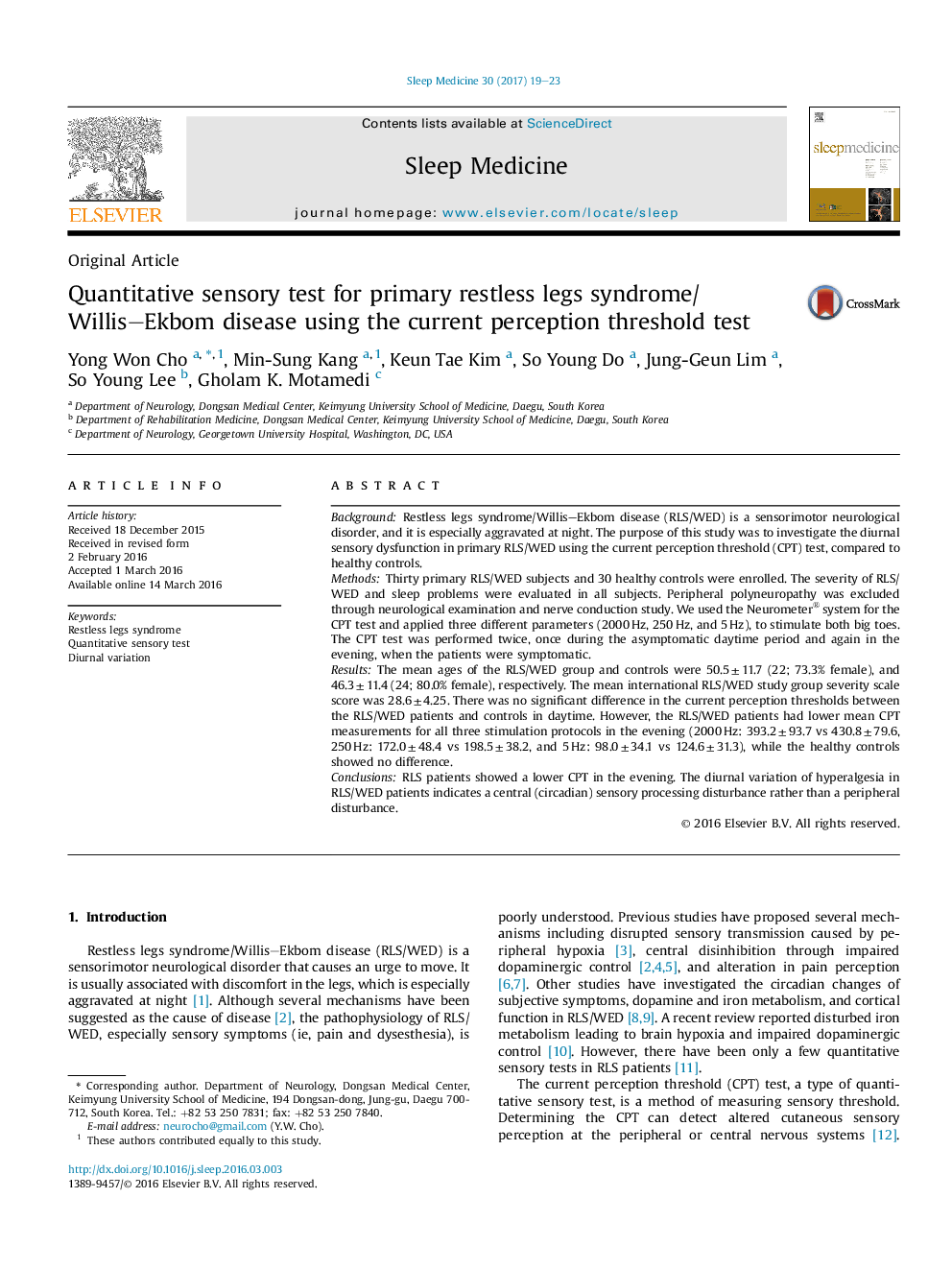| کد مقاله | کد نشریه | سال انتشار | مقاله انگلیسی | نسخه تمام متن |
|---|---|---|---|---|
| 5643803 | 1586479 | 2017 | 5 صفحه PDF | دانلود رایگان |

- RLS/WED patients showed a lower current perception threshold in the evening.
- This nocturnal hyperalgesia is in line with the predominantly nocturnal symptoms.
- RLS/WED may be altered with central pain modulation with circadian variation.
BackgroundRestless legs syndrome/Willis-Ekbom disease (RLS/WED) is a sensorimotor neurological disorder, and it is especially aggravated at night. The purpose of this study was to investigate the diurnal sensory dysfunction in primary RLS/WED using the current perception threshold (CPT) test, compared to healthy controls.MethodsThirty primary RLS/WED subjects and 30 healthy controls were enrolled. The severity of RLS/WED and sleep problems were evaluated in all subjects. Peripheral polyneuropathy was excluded through neurological examination and nerve conduction study. We used the Neurometer® system for the CPT test and applied three different parameters (2000âHz, 250âHz, and 5âHz), to stimulate both big toes. The CPT test was performed twice, once during the asymptomatic daytime period and again in the evening, when the patients were symptomatic.ResultsThe mean ages of the RLS/WED group and controls were 50.5â±â11.7 (22; 73.3% female), and 46.3â±â11.4 (24; 80.0% female), respectively. The mean international RLS/WED study group severity scale score was 28.6â±â4.25. There was no significant difference in the current perception thresholds between the RLS/WED patients and controls in daytime. However, the RLS/WED patients had lower mean CPT measurements for all three stimulation protocols in the evening (2000âHz: 393.2â±â93.7 vs 430.8â±â79.6, 250âHz: 172.0â±â48.4 vs 198.5â±â38.2, and 5âHz: 98.0â±â34.1 vs 124.6â±â31.3), while the healthy controls showed no difference.ConclusionsRLS patients showed a lower CPT in the evening. The diurnal variation of hyperalgesia in RLS/WED patients indicates a central (circadian) sensory processing disturbance rather than a peripheral disturbance.
Journal: Sleep Medicine - Volume 30, February 2017, Pages 19-23